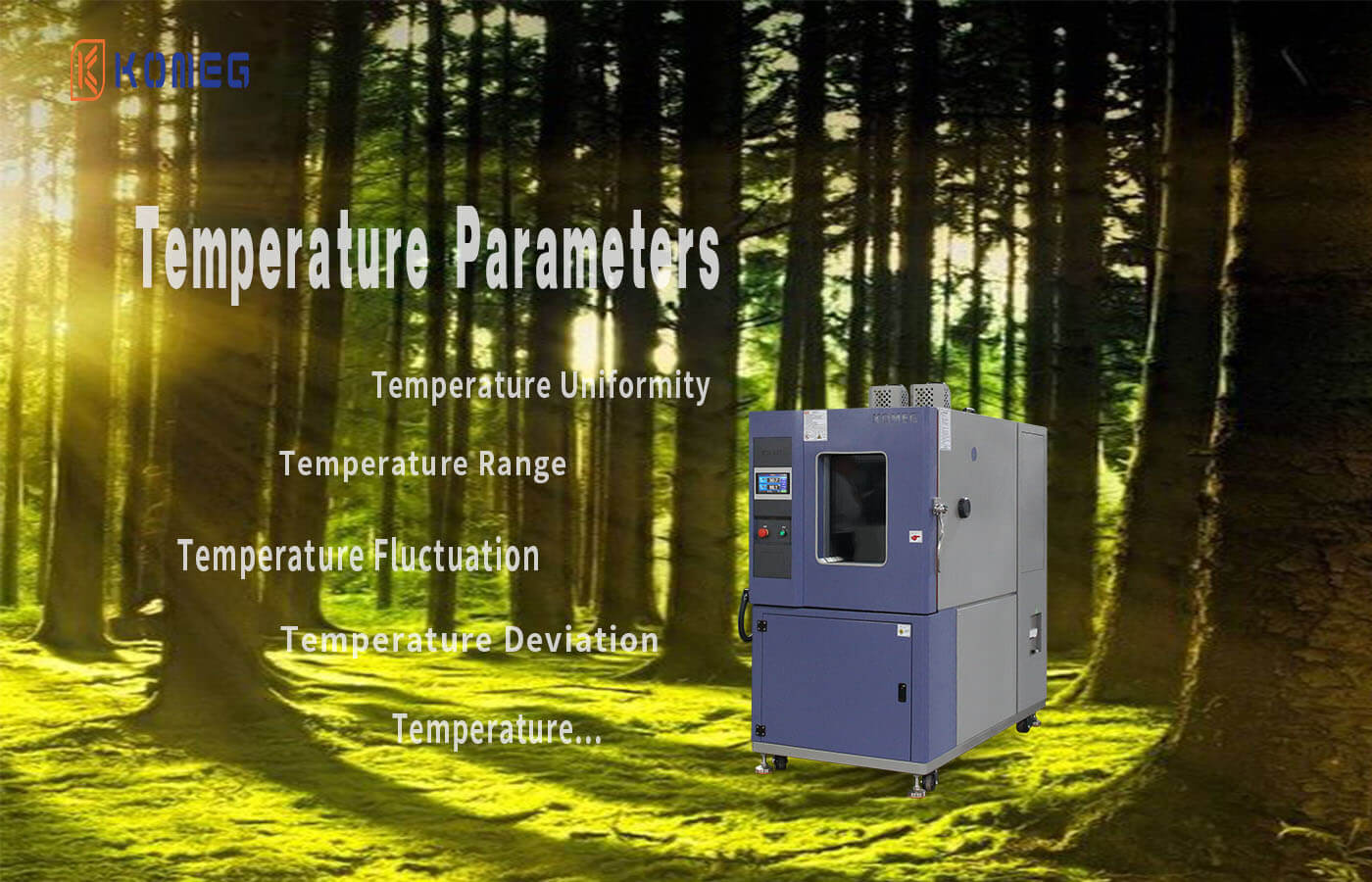KOMEG temperature chambers mainly include high and low temperature test chambers, temperature shock test chambers and temperature cycle test chambers. There are many parameters about temperature in the specifications of these environmental chambers. What does these parameters within environmental temperature chamber specification mean?
Temperature Range
Refers to the minimum and maximum temperatures that can be achieved by the environmental test chamber.
Minimum temperature: Except for special products that require testing at -70°C, most products only need to be tested at -40°C.
Maximum temperature: Our temperature test chambers can reach up to 180°C, but we generally do not recommend customers to choose this temperature. This is mainly due to the difficulty in design and the higher cost. If testing indeed requires this temperature, it is also advisable not to use this temperature point for a prolonged period.
Considering the difficulty in temperature chamber design and customer cost, we suggest that customers choose the temperature range that is actually required for testing rather than blindly pursuing a wider temperature range.
Temperature Fluctuation
The difference between the highest and lowest temperatures at any point within the working space of the environmental chamber, within a certain time interval, after temperature stabilization.
Temperature Uniformity
Also known as temperature gradient. The maximum difference between the average temperatures of two points within the working space at any time interval, after temperature stabilization.
Temperature Deviation
The difference between the average temperature at the center point of the working space and the average temperature at other points within the working space, at any time interval, after temperature stabilization.
Temperature Change Rate
It can be divided into linear and non-linear, referring to the rate of temperature change (heating rate/cooling rate) from one temperature point to another.
Linear is a constant value: During the testing process, the temperature change rate remains constant.
Non-linear is an average value: During the testing process, the temperature change rate varies and is taken as the average of the overall temperature change rate.
Temperature Recovery Time
The time required for the temperature to reach the specified low temperature value when transitioning from a high-temperature state to a low-temperature state is referred to as the low-temperature recovery time. The same concept applies when transitioning from a low-temperature state to a high-temperature state, which is also referred to as the temperature recovery time.
Transition Time
There are two types of temperature shock test chambers: two zones and three zones.
For a two-zone temperature shock test chamber, the transition time refers to the time it takes for the basket to move from one temperature chamber to another. For a three-zone temperature shock test chamber, the transition time refers to the time it takes for the damper to switch, specifically from the opening of the damper to its closure.
These are the common product parameters related to temperature. I hope they help you better understand temperature test chambers.

